The Factory: Tombo
With monsters and shamen, the illustrator interprets the aural aesthetic of Nina Kraviz's label.
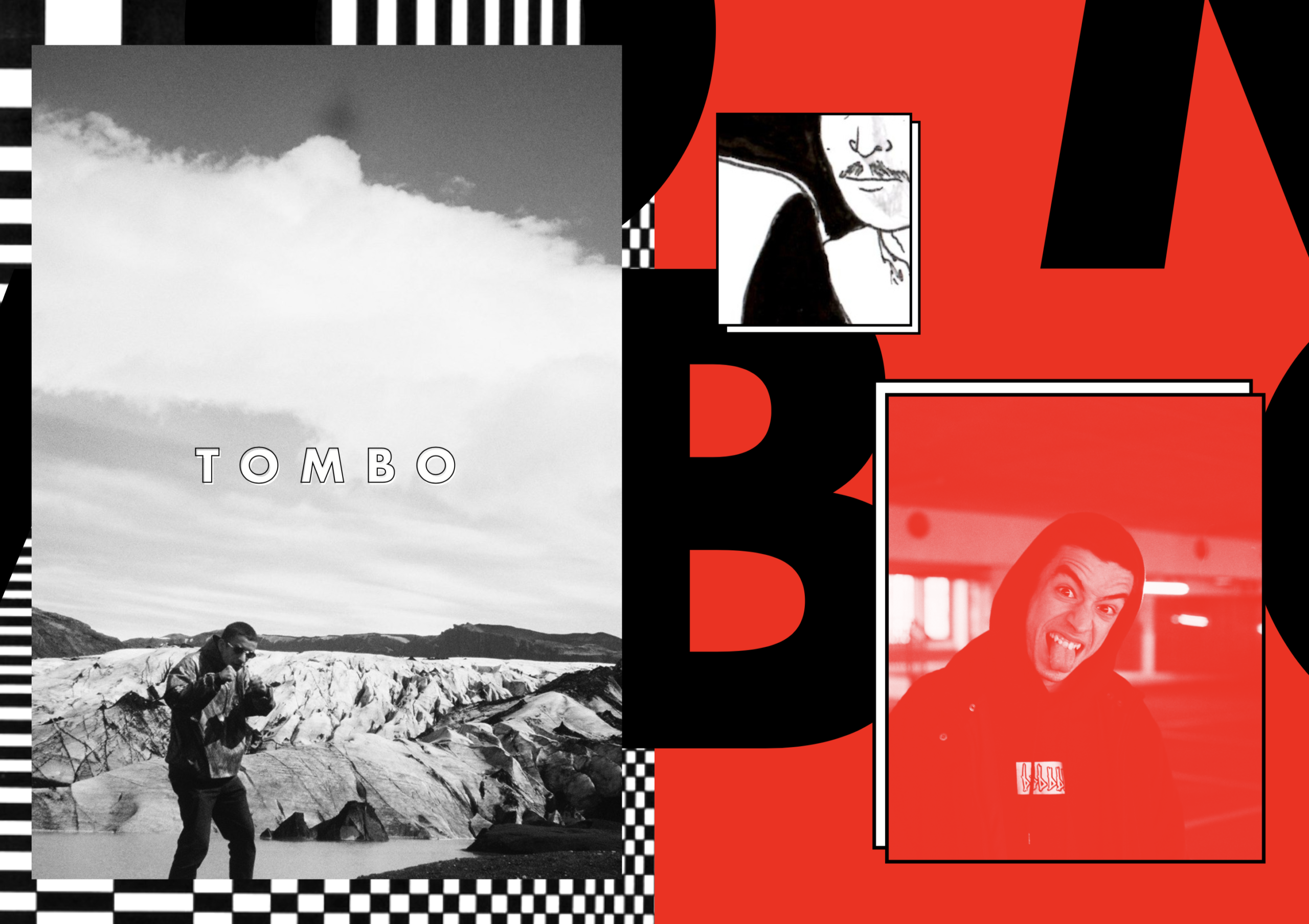
The Factory: Tombo
With monsters and shamen, the illustrator interprets the aural aesthetic of Nina Kraviz's label.
Today we revisit and relaunch The Factory, a feature series that explores music’s relationship with other art forms and how it permeates into the aesthetic of the visual artists, designers, studios, and event producers that operate behind the scene’s in the music industry. The last time The Factory appeared on XLR8R’s pages was early in 2016, featuring visual artist João Salgueiro (a.k.a Tombo). With Salguerio the featured visual artist on this month’s edition of XLR8R+, we thought it was time to update the piece and relaunch The Factory to give insight into the work of the talented artists behind some of our most loved labels, events, and music. You can find out more about XLR8R+, our movement to support independent music and journalism, and how you can help support independent culture here.
Painters, composers, and writers alike have gone to great lengths to try and understand the bond between art and music. Paul Klee, Igor Stravinsky, Piet Mondrian, and Wassily Kandinsky are among the great minds that have often reflected upon the notions of art and its relationship to music. Kandinsky was so interested in this that he would often name his paintings after musical terms. (It was frequently believed that the painter had a rare neurological condition called synesthesia that allowed him to hear color and see sound, eventually leading him to create the abstract paintings he is now known for.) Naturally, we want to dive into the subject and explore what this relationship means to the music world today.
25-year-old, João Salgueiro (a.k.a Tombo) is an illustrator who has been making a name for himself, thanks mainly to the work he’s been creating for Russia-based imprint трип (Russian for “trip”), founded by Nina Kraviz. The Russian selector embarked on her latest musical journey in 2014, and has been requisitioning Salgueiro’s conceptualization and artistic expression ever since, having first discovered his talents via his Facebook page. трип has characterized its releases as “dusky, divergent, and trippy,” and its main goal has been to “stimulate brains, dreams, and fantasies” of each of its followers; as an illustrator, Tombo’s creations aim to capture that same vision.
Currently based in Lisbon, with a desire to move to Japan later on in life, Salgueiro opens up about his struggles as an artist and his inspirations—“one thing I like to do is to look at banal objects, like a telephone for instance, and make something out of that, find some inspiration in that, creating a monster out of that”—and discusses his quest for originality and staying true to his vision. “Tombo was inspired by some African tribe names,” Salgueiro says of his adopted moniker. “I liked the sound of it because it reminded me of tombar, the Portuguese verb meaning to fall, and this idea of falling into the universe.” Revisiting a past conversation, XLR8R let itself fall back into the illustrator’s creative cosmos.
How did you start working for Nina and трип?
In 2014 I was in Africa, in Mauritania, working with my father at his restaurant and one day I was really bored so I picked up a pen and a paper and started drawing Nina— for some reason I was drawing her in a really creepy way. When I finished the drawing, I uploaded it on my Facebook page and tagged her. Somehow later that night, she messaged me asking me if I was the author of the drawing, and then asked if I could draw an octopus. I drew it and she immediately responded saying she loved it. She asked me to do two more drawings of the octopus after that, so I asked her what it was for—she answered that it was for the first album on her new label, трип!
How has the working relationship developed since?
The first album was released in December of 2014, and we’ve been working a lot together since. It’s been a really amazing thing to be a part of the crew. I met Bjarki sometime after and started working on some things with him, like portraits and other things. I also met Exos sometime after, and then I started doing some profile pics for Nina, etc. It’s all been quite great.
When did you meet Nina for the first time?
We met her for the first time in Lisbon at a dinner with the people from Lux Fragil, the club where she was playing later that night. When we got to the party, she immediately entered her universe—this is something I relate to because when I’m drawing I also get completely submerged into my world, and I really admire what she’s doing in the music world in general.
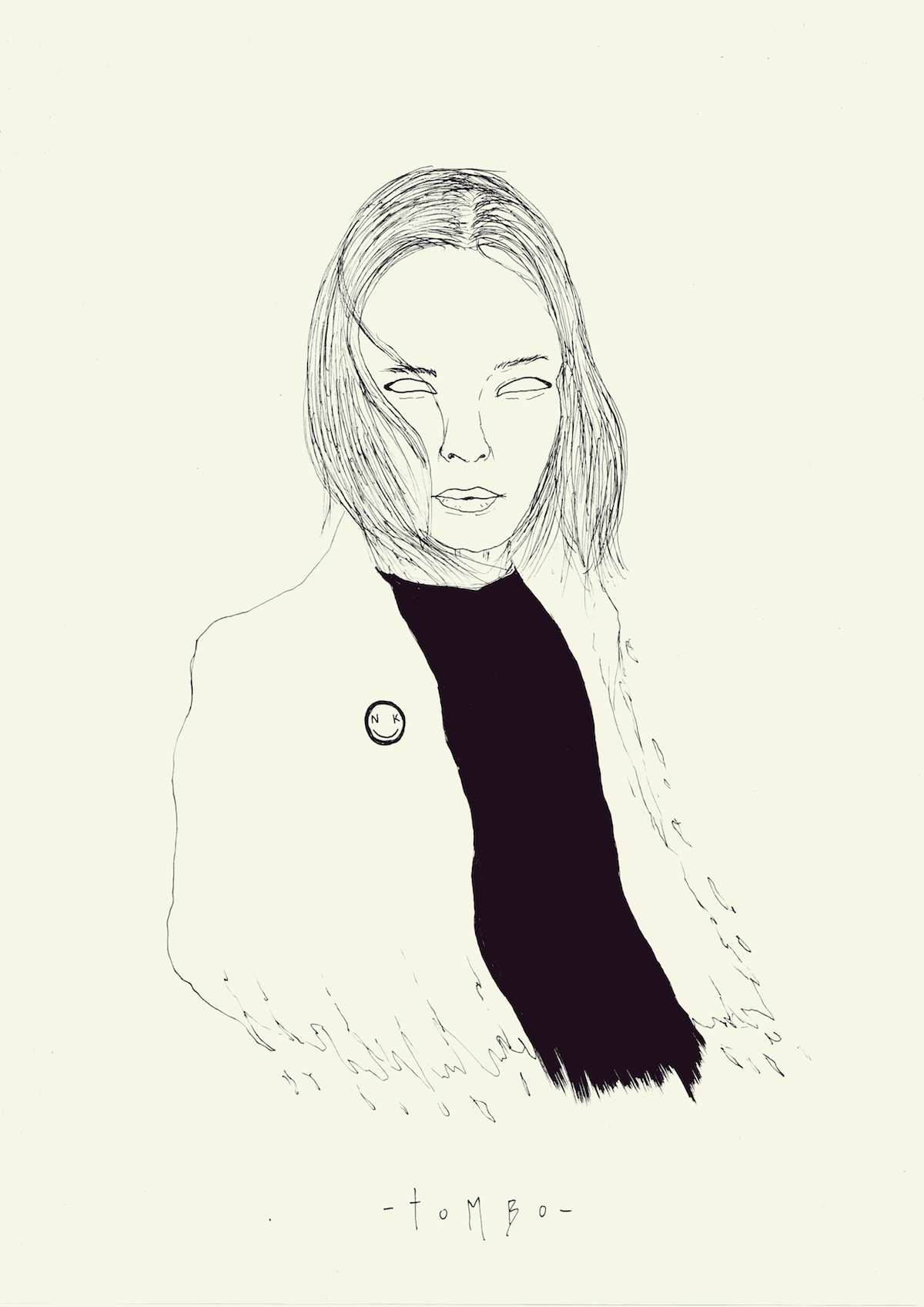
She seems like an approachable, down-to-earth artist. Were you a big fan prior to working for her?
Yes, absolutely, she’s a very good person. But I started listening to techno in 2013—people like Nina and Marcel Dettmann, among many other artists. I think the first time I noticed Nina’s talent, it was in a podcast from the Berlin Boiler Room.
Was this what inspired you to draw her in the first place?
Well, actually I just had a random thought to draw her, I was searching, If I’m not mistaken, through some techno podcasts for someone to draw, and randomly I found her and started to draw her.
Are these drawings something you’ve always been doing? Did you go to art school?
No, it was just self-motivation. I started drawing when I was around 11 years old. I started to copy some Anime characters, but in the end, I started to get bored to just copy stuff. So I just thought to myself, okay, let’s try to be original and make something different; something that comes only from me. That’s how I started drawing ghosts and creepy creatures. Then I started to evolve quickly, and began drawing tribe men, shamans, and all sorts of different characters.
I generally go for a creepy vibe that I incorporate along with characters that I’ve created from scratch, like the “vagina men” that are on the third трип album, for instance. Actually, my first exhibition took place in 2012, and it was amazing because a lot of people turned up and I used lots of these people as inspirations for the drawings. The more I see myself evolving, the more I start to create something that’s just for me. Now I have this collection that I call “mental diarrhea,” which consists of a lot of random sentences that don’t really mean anything like “I like cocaine with tomato but sometimes I like gnocchi on the salad”—things that make absolutely no sense.
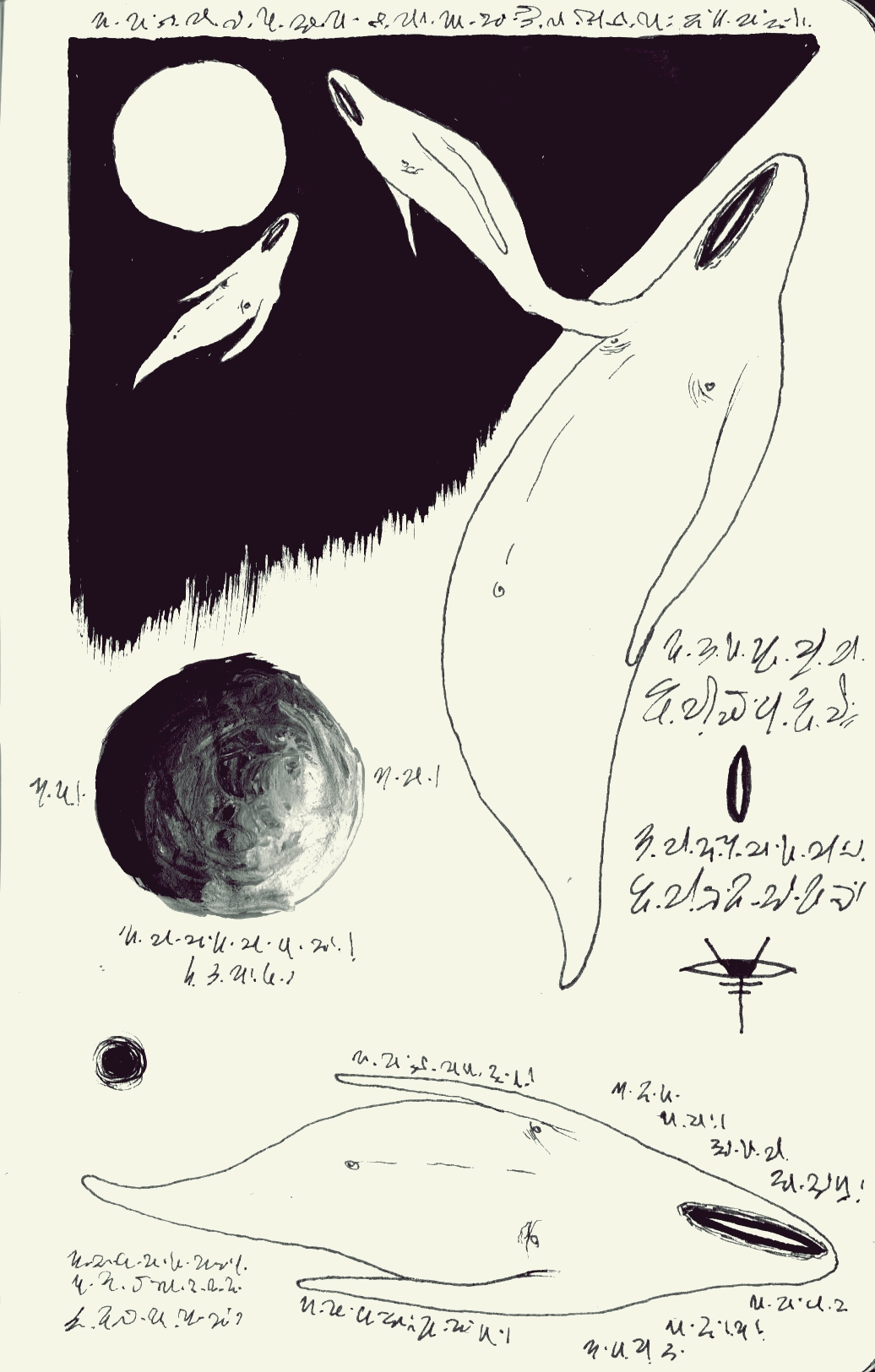
“Passion and love are the weapons to be a true artist.”
What other collections do you have, and what do you think it is that ties it all together?
Well, the collection that I call Mental Diarrhea is one where I start to draw randomly and flood the paper with nonsense and at the end it kinda gathers everything that has no sense to something that has sense. This process helps me to throw up a lot of mixed thoughts that I have and clean up my head. I also have these old sketchbooks, which nowadays I don’t draw in too often, but each of them has a story within, and all of them have one thing in common, which is simplicity, and I sometimes revisit them to remember the importance of my aesthetic.

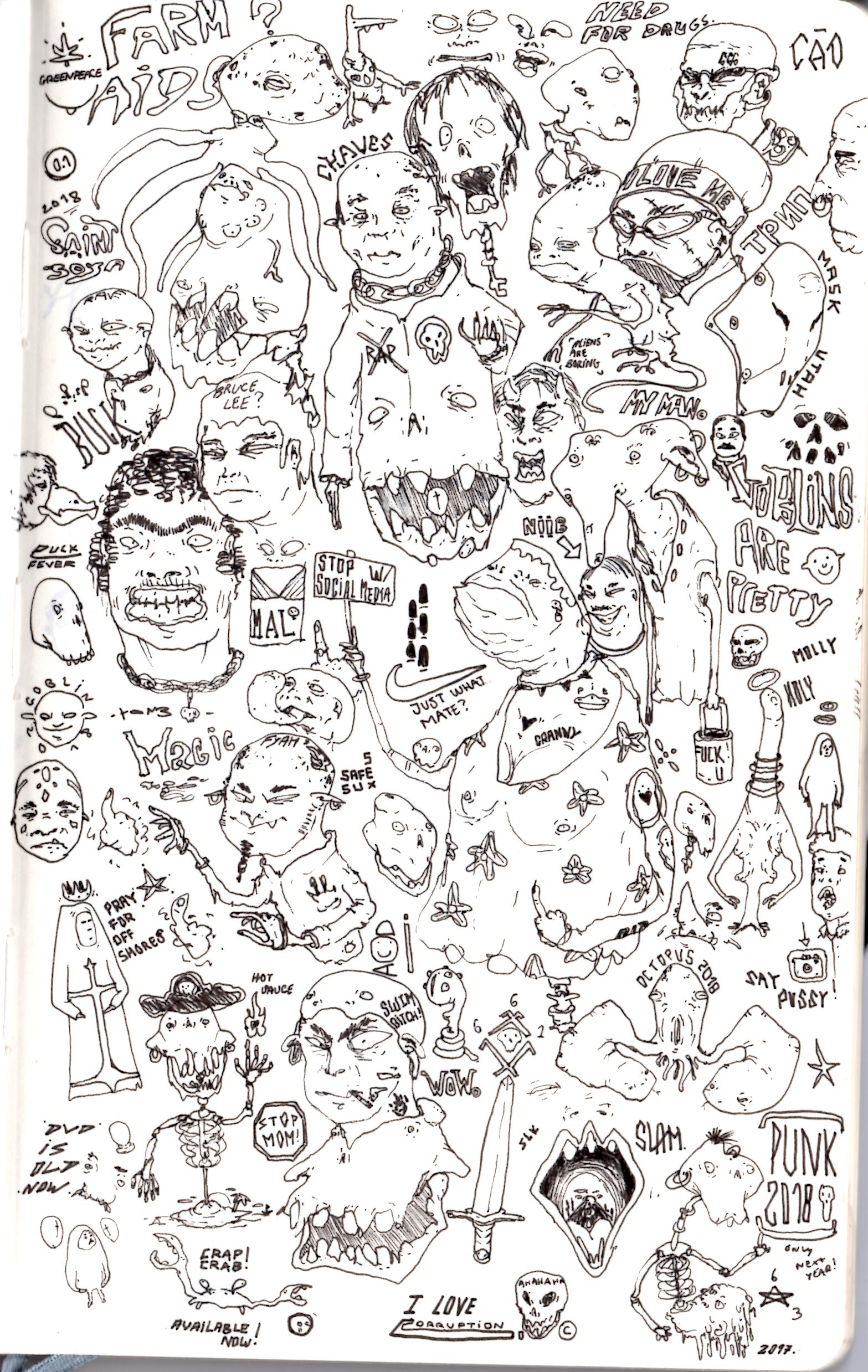
Are there other artists that you look up to? When looking at your drawings one could draw similarities to artists like Miyazaki, for instance—do you get that a lot?
Yeah, a lot of people have mentioned that my drawings have some likeness with artists like Miyazaki, Naruto, or even Akira but I just see myself as being completely original. Of course, there are artists I admire. For instance, there’s this Spanish or Venezuelan guy—not sure exactly where he’s from—but his name is Harriorrihar and he makes really creepy stuff. But the most inspiring to me is Akira, by far. He definitely pushes me to make more dark and powerful stuff. When I was back in Mauritania, I experienced some creepy moments that sort of marked me, which is how I also started to only make black-and-white art—and in the end, I really like this because I think it makes a more powerful statement.
I guess you could say that my favorite artists are just people I respect and admire a lot. In my opinion, each artist has their main thing—whether good or bad—and the main thing about a drawing is the idea behind the drawing and the motivation that an artist delivers while drawing, and that’s what a true artist is. Passion and love are the weapons to be a true artist. If I had to choose a favorite artist, I would choose myself.
What is this connection with Mauritania?
Well, basically it all started in Portugal, when things came to a point where I just felt generally imprisoned and felt like I needed to get out and free my mind. So I traveled to Mauritania, with my dad and one of his friends, driving all the way down from Lisbon. It took something like three days of travel, and I saw some really amazing stuff. When I arrived in Morocco, I saw the mountains that were super impressive, and I had never seen a landscape like that in my life. The religion there is very strict, and it moved me in a way to draw something dark and something very restricted, I guess. I’m not sure how to put it in words—for instance, the character of the “mustache man,” with no real visible face and all in black, is my own interpretation of the women there who hide their bodies behind their black garments, covering their bodies entirely. For me, it was very powerful.

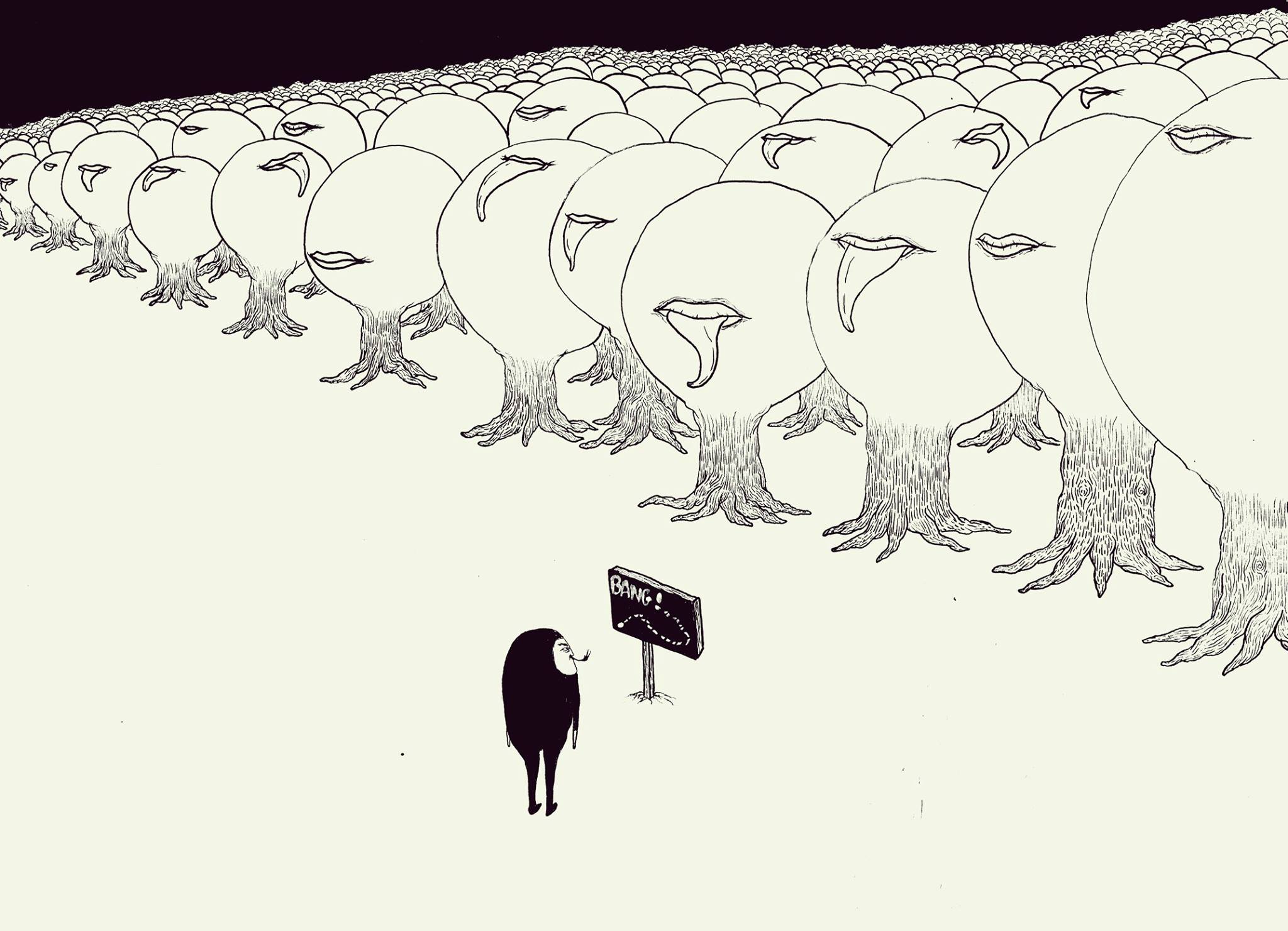
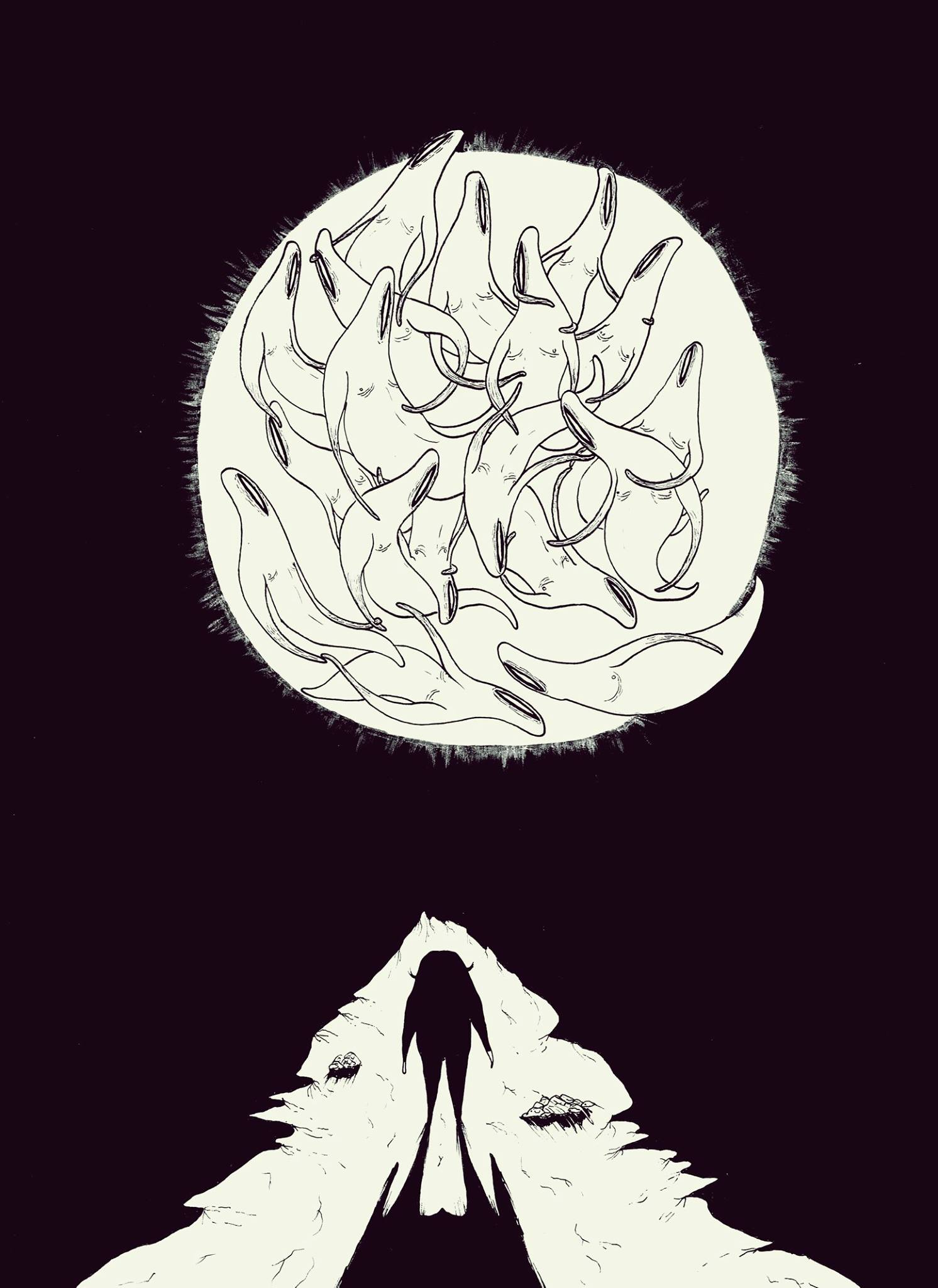
Can you talk about what kind of guidelines Nina gives you for the artwork? How does the process work, in relation to what is expected of you with your drawings?
With the albums, she usually gives me a sentence, something that’s related to the album. For example, with the Arthur And Intergalactic album from Bjarki, she said, “This is what I want, Tombo.” And then she gave me this sentence to work from: “I wanna see all my friends at once—I’ll do anything to get a chance to go bang!” That was the main sentence of the third album where I had to draw my inspirations from. From that, I can create a landscape and put monsters on it, or whatever I want. As you can see in the third album, I created something like a sex forest, and I drew some type of creepy creatures on the moon with the main character looking at the orgy from afar.
“I think an artist should only focus on himself, and what he sees on a daily basis in the street.”
That must be great for you as an artist; it means you get a lot of freedom.
Yeah, definitely. She believes in my work—she loves it— and I myself love my own work, so it’s very cool. Sometimes I get annoyed when all I get from people is positive feedback, because it’s also good to be challenged and hear someone say that they don’t like my stuff—and to be able to use that for self-motivation; to push myself to do more, to make even creepier and stranger drawings. I also find it quite hard to know whether people are sincere or not when all they say is positive. Obviously, it’s still good because it makes me happy that so many people like my drawings, but sometimes I wish I could hear people say, “No, I don’t like it,” and get more constructive criticism.
I have a lot of artist friends and sometimes when I look at their drawings, I just think they’re doing the same things over and over again, and I don’t really see them pushing their own boundaries, trying to make something different. For me a real artist is an artist that has an open mind, that can do more than one thing; that is versatile. Some artists focus too much on what other artists are doing and I think that’s bad. I think an artist should only focus on himself, and what he sees on a daily basis in the street.
I still admire my friends and their work but sometimes I feel like they just can’t evolve in an artistic kind of way. The main problem is nowadays there are things like Facebook and TV, that suck all creativity away from people or distract them from their art. It’s a real problem. Don’t get me wrong though—if it wasn’t for Facebook, I would have never met Nina and I wouldn’t be doing what I am doing now for the label…but most people often use it in the wrong way with all this selfie culture around us.
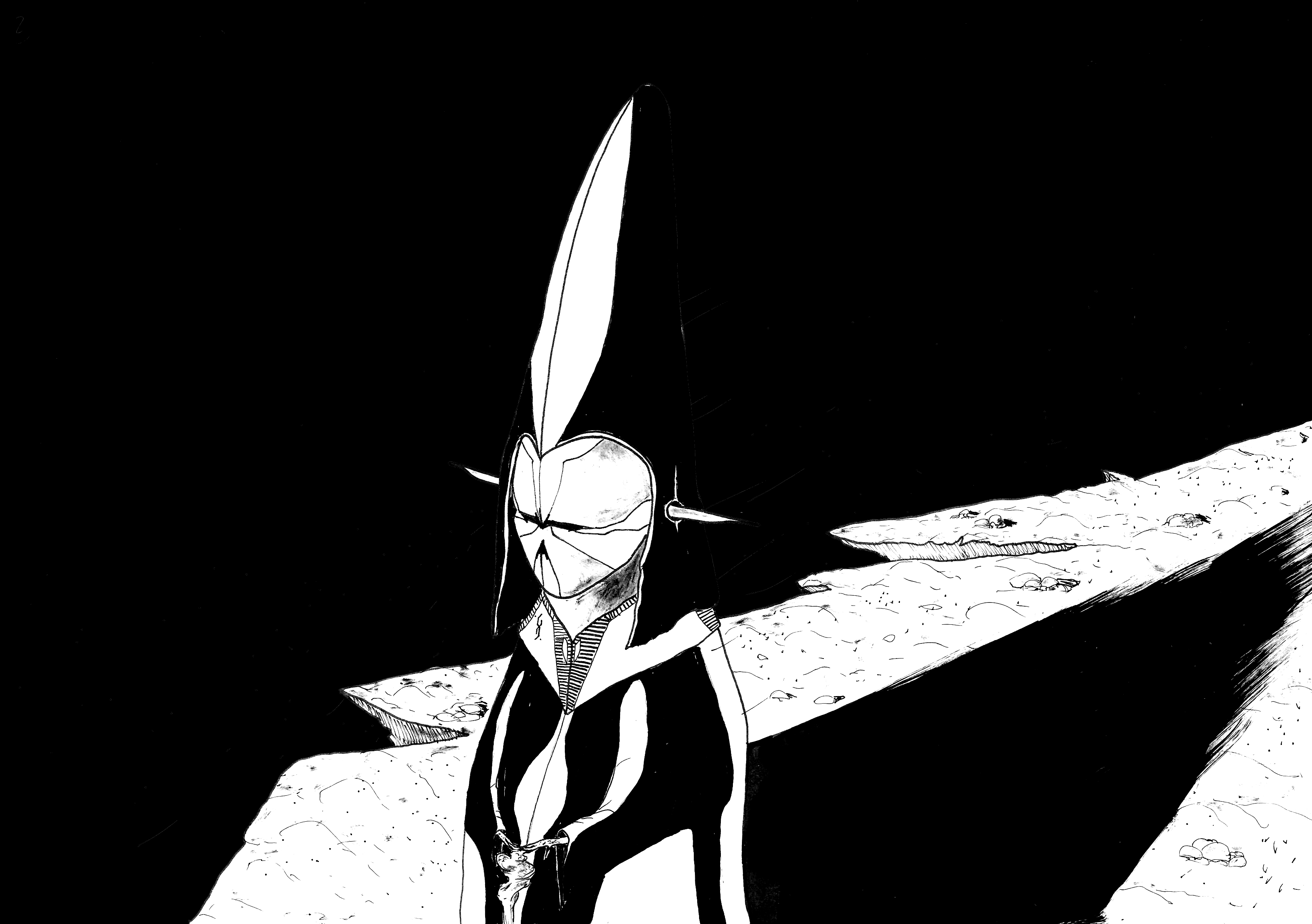
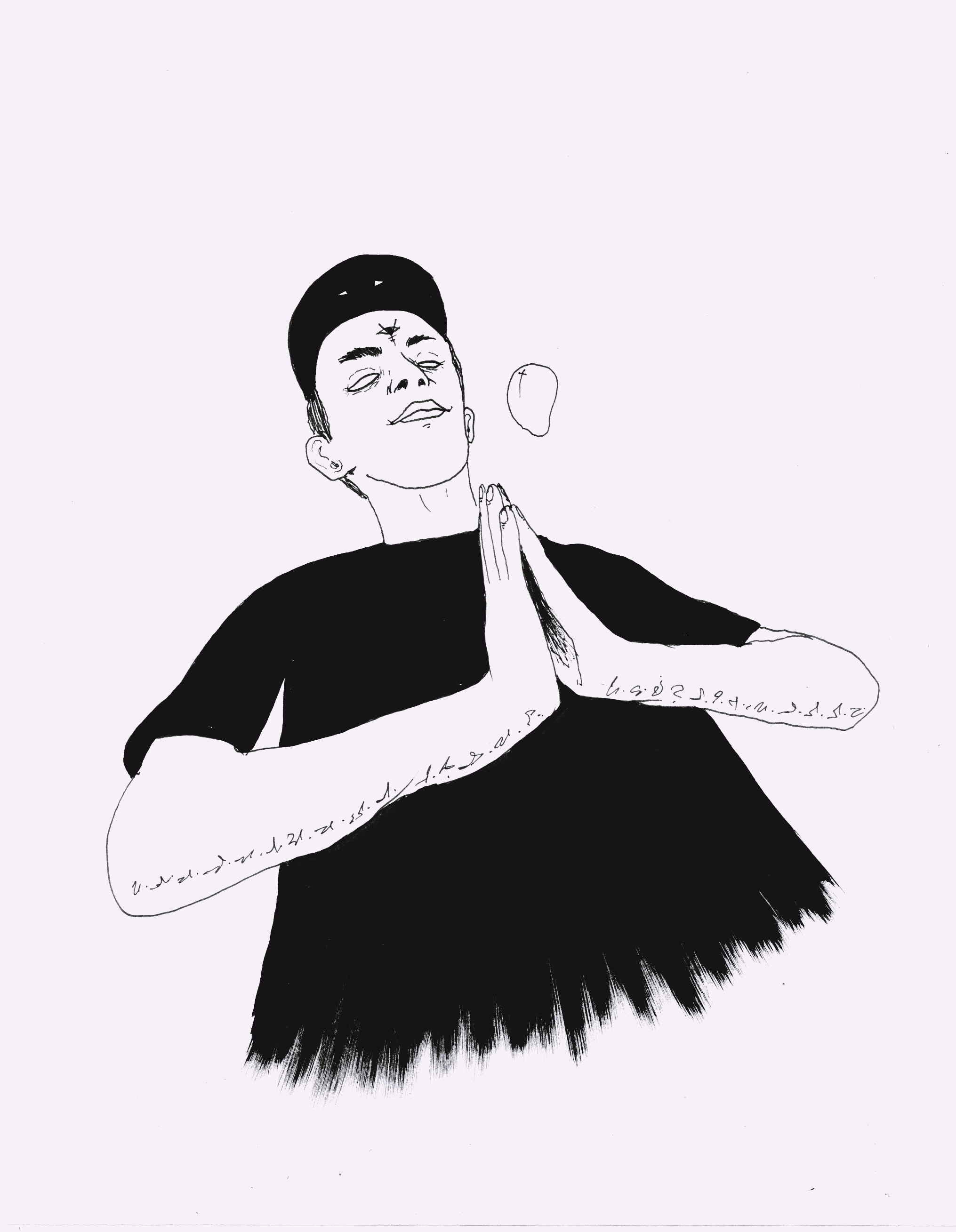
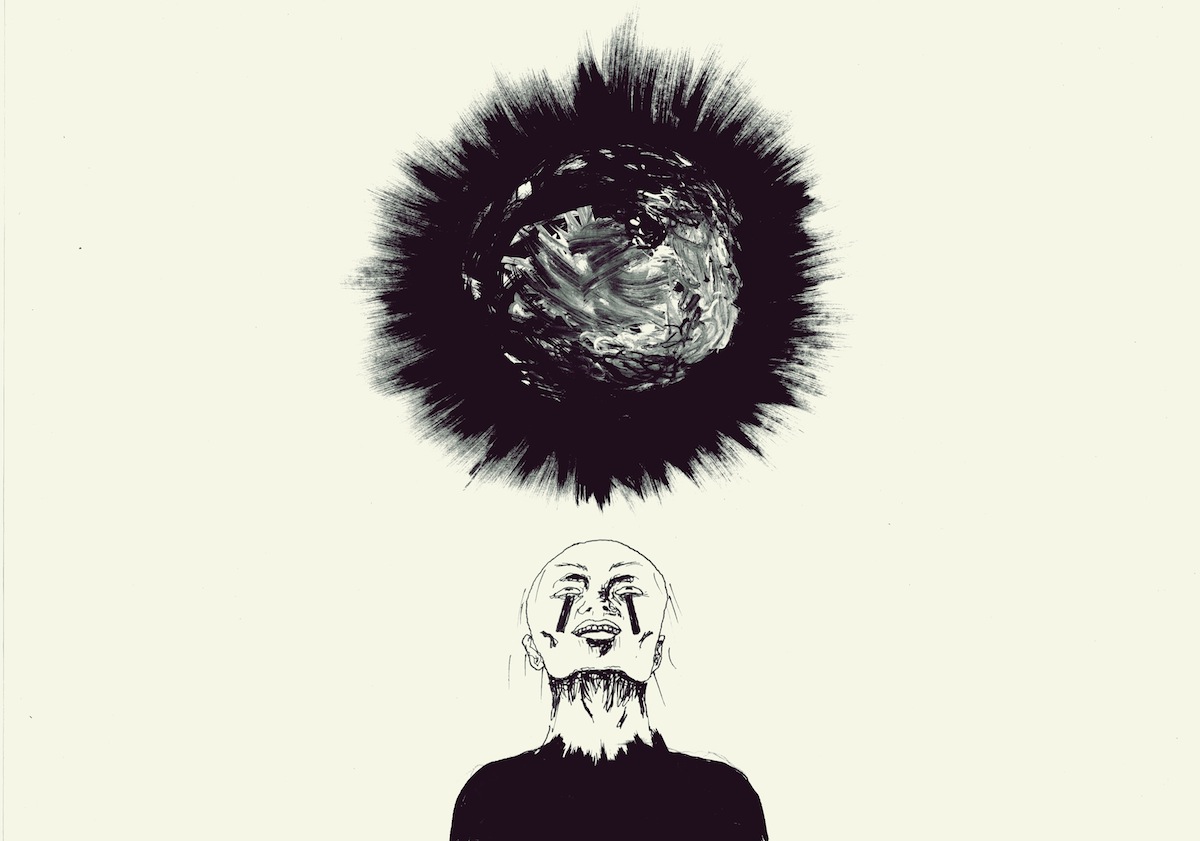
How does the music inspire you, or do you focus more on Nina’s statement?
For instance, Nina sent me some music from Roma Zuckerman, who was featured on Ivan, Come On! Unlock the Box! and on the fifth release, I Have a Question, so basically I just listened to that during the drawing process. It was quite a solid tune. In the beginning, when listening to the music, it was very hard because there were a lot of things coming up in my head—like the universe, a city made of steel, monsters made of steel, really powerful images. I realized the connection of that music and the fifth album is with the universe and its mightiness, which led me to draw something about it—but you’ll have to see for yourself. I think it’s the best трип album to date, and the artwork too. I’m always excited to see everything coming together.
How did you go about designing the XLR8R+ artwork, and how does this compare to your normal process?
A friend of mine got in touch with Luke Cheadle, and he contacted me by email to work for this new series called XLR8R+. Luke sent me all the details to explain what it was all about and that he would like to work with me for this feature, so I accepted it right away. My process of research and drawing is the same as I do for Nina, nothing changes: I listened to the music, and drew the characters.
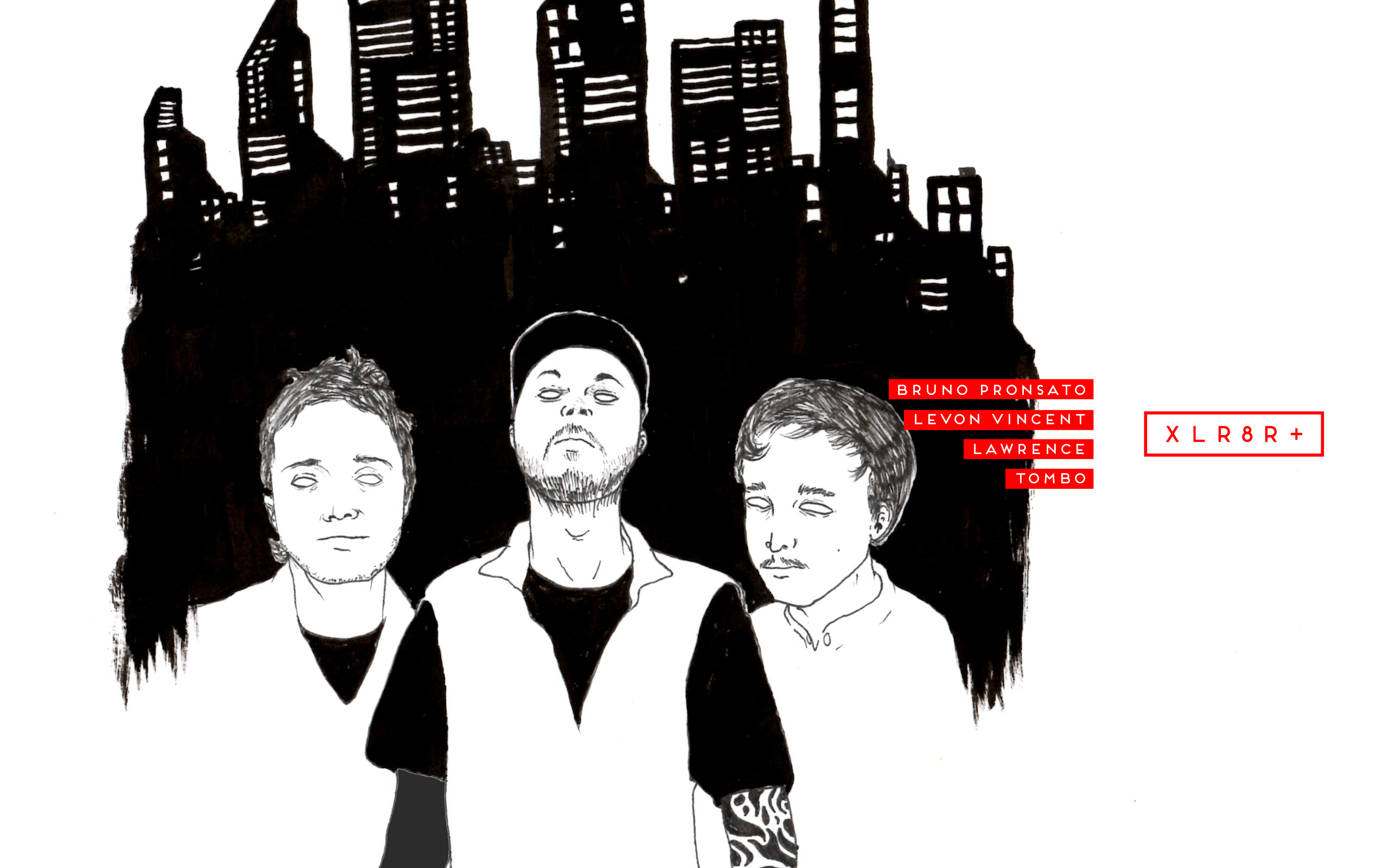
How did the music inspire the aesthetic of the drawings?
The music is not always apart of my drawing processes, sometimes I am drawing listening to people talking on channel news about global issues or other stuff, or I am at the coffee shop listening to people talking while I am drawing, and that puts me in “zen mode,” which is a curious thing. When I am listening to music, I just listen to random stuff: Gábor Lázar, Kindohm, Not Waving, etc. This helps me to evolve and maintain the aesthetic of my drawings, not just the music but the sound environment I am inhabiting.
What are some of the difficulties you encounter as an artist?
Sometimes, it’s very tough. For instance, for the second album, De Niro Is Concerned, it was really hard because I was supposed to get inspired from the actual actor, Robert De Niro, and build a character around him. But it’s a difficult balance to get inspired and interpret something in a way that is still faithful to your own aesthetic and that truly represents you as an artist. The goal is not to copy something but find your own interpretation, which was really tough at first. De Niro was the most difficult so far. But I think I nailed it in the end, and I think it’s really cool; I’m happy with the result. Also, finding inspiration from sounds can be tricky too. There’s too much stimulation, so many things coming up to mind to get inspired by…everything is more open to interpretation as well.
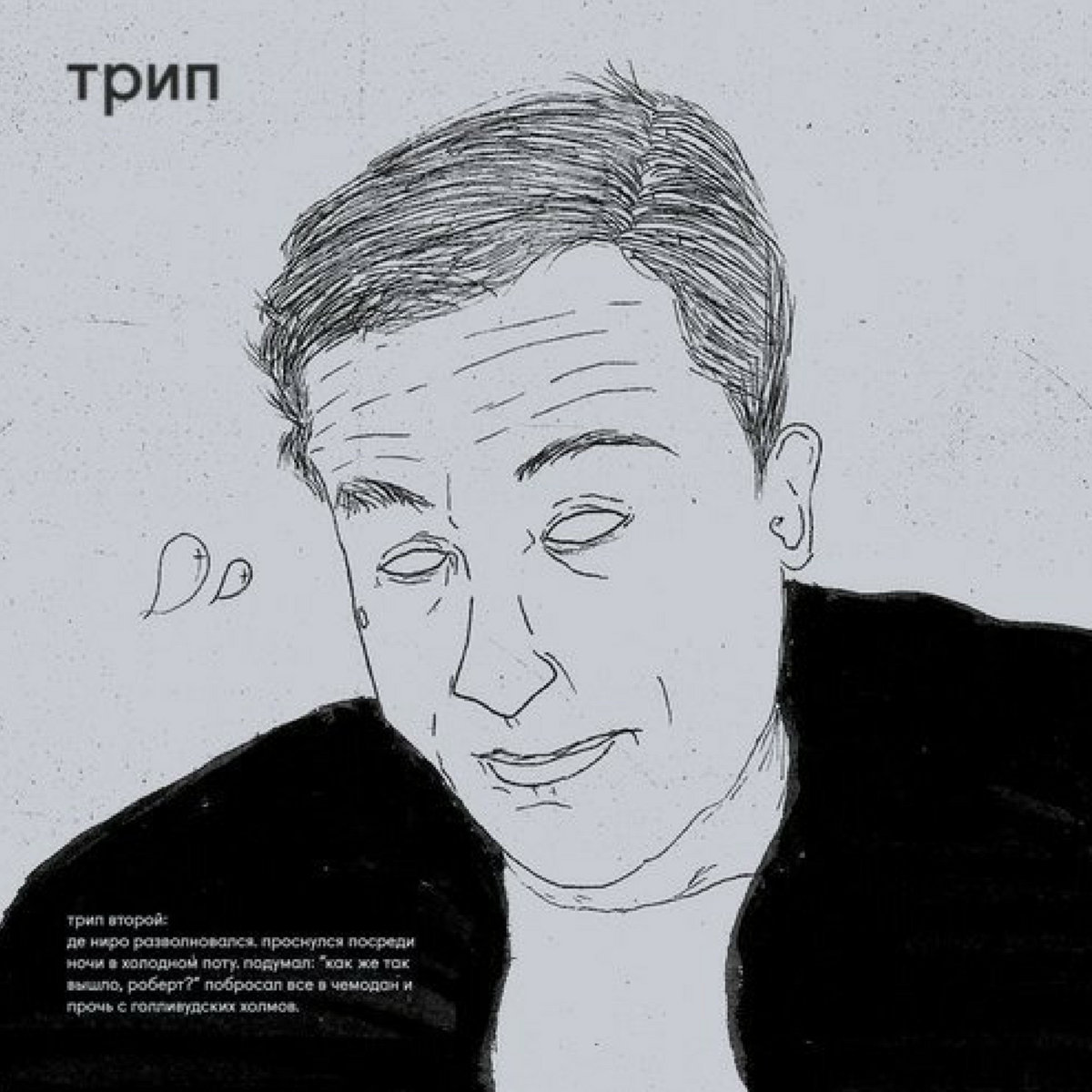
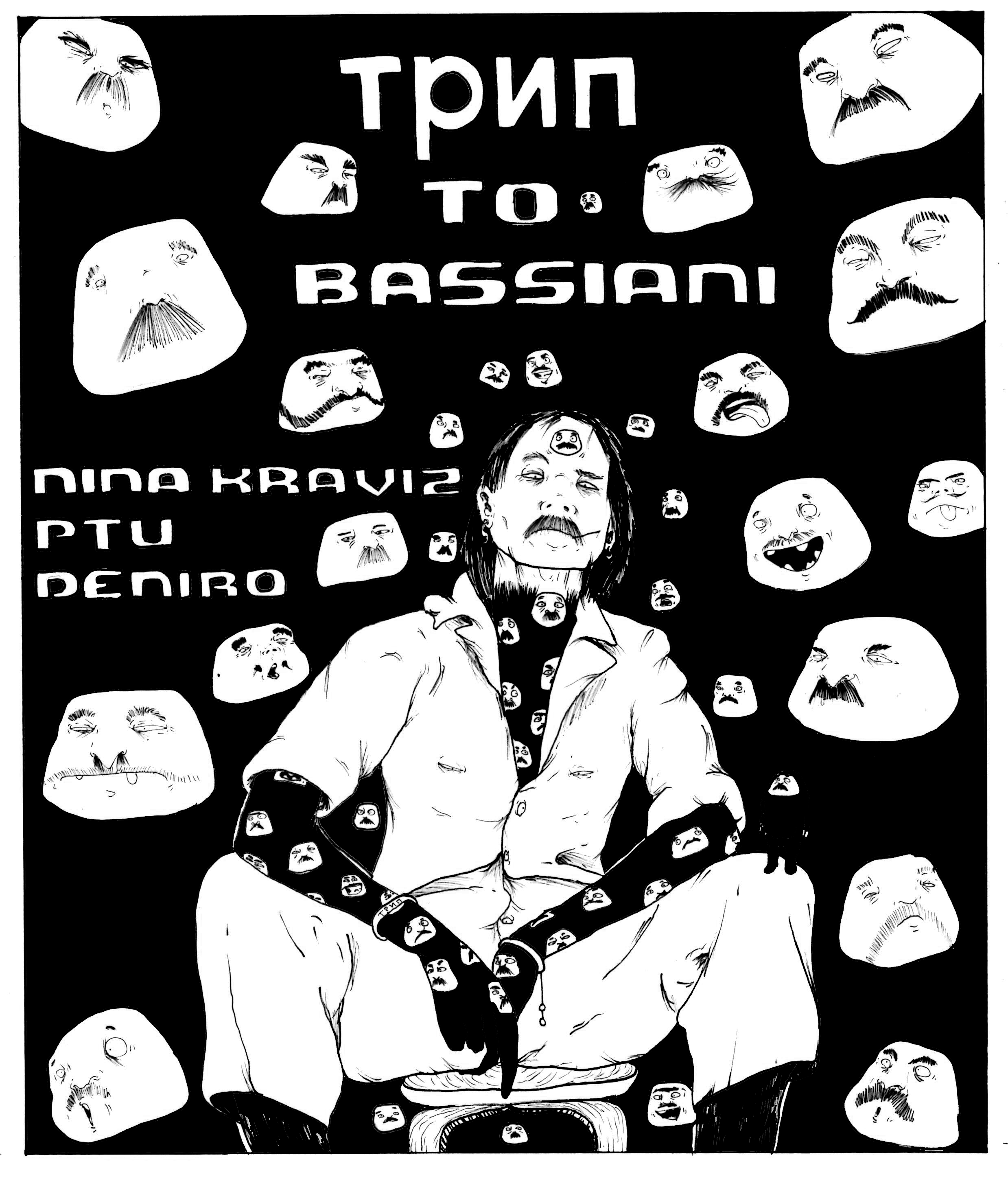
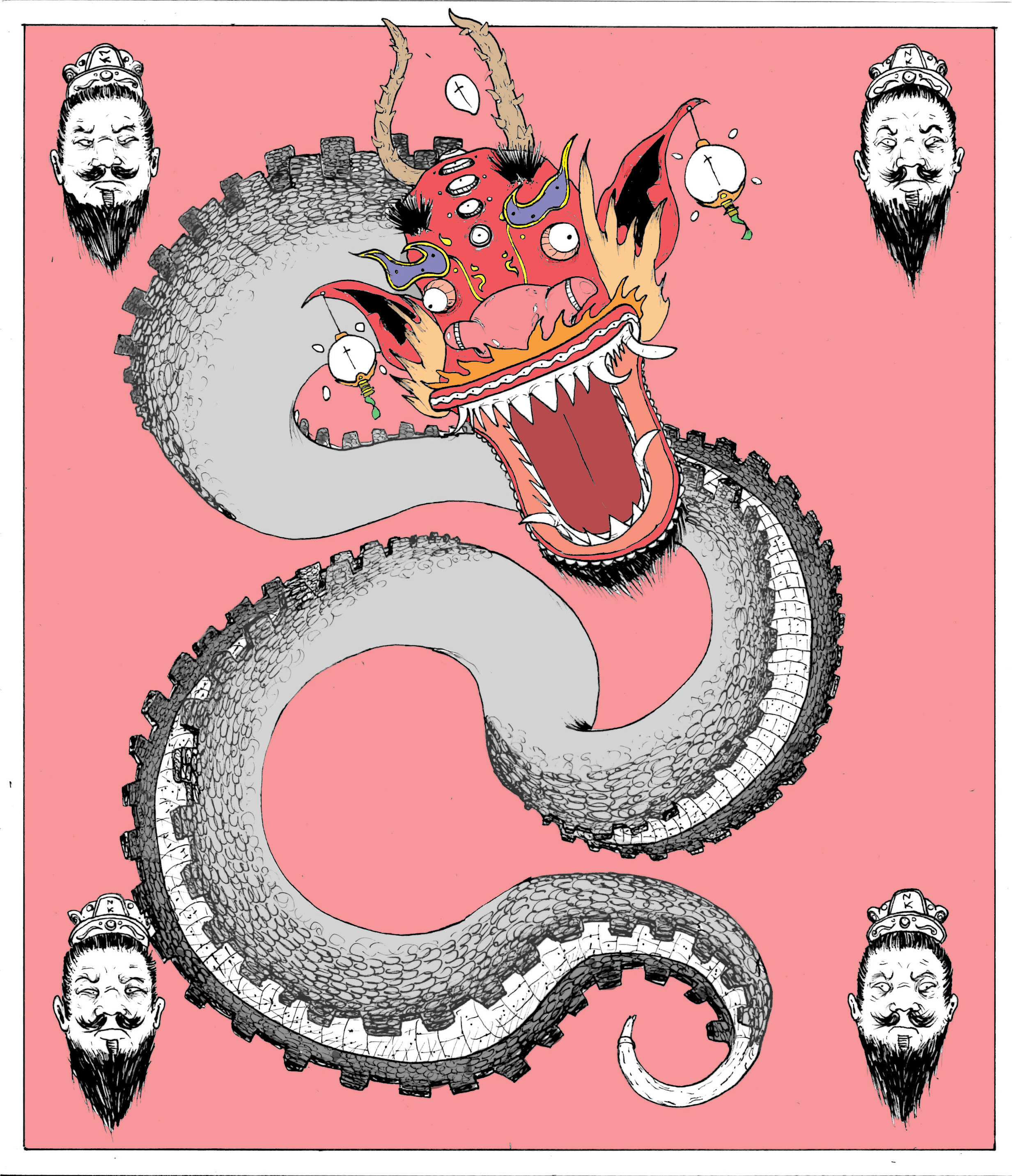
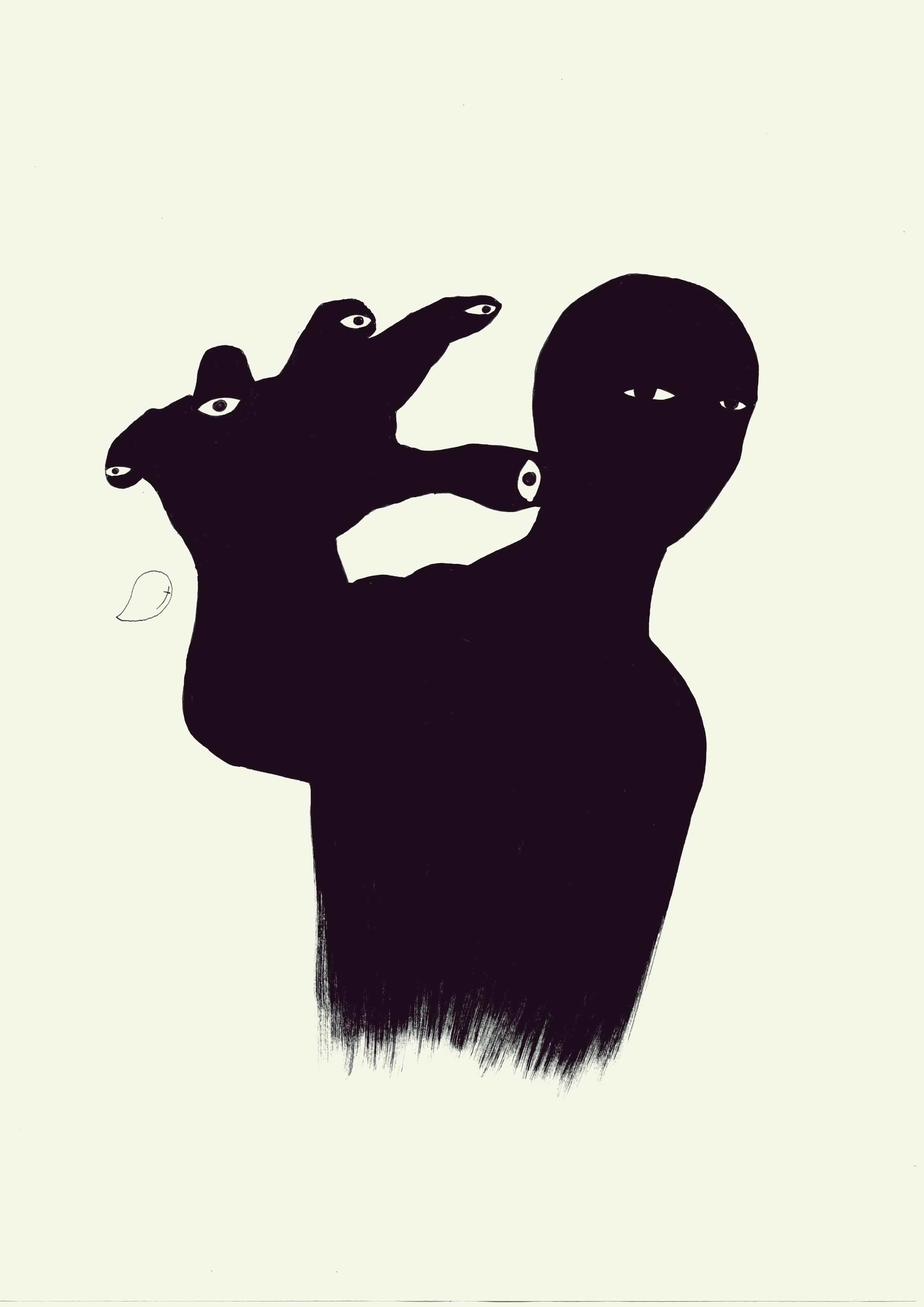
What do you think of the relationship between music and art?
It’s very important, music is a complement of almost all of my characters and my work. When I am listening to something new, my brain automatically starts to develop some sort of new creature or weird guy; it’s like I am giving a soul to the character. Music is a powerful weapon that has shared a brotherhood with art for thousands of years, and it will never shatter, no matter what the music genre is, they can together create an infinite process of interpretation.
Do you have a favorite artist on the трип label?
Everyone is a favorite for me because each of us shares a very unique style through sound and art, and it all works together very well—and that’s what makes this label so special.
Does it ever make you want to go back to being a DJ?
Yeah, definitely.

Where do you see yourself in the future?
I don’t know, I don’t really think about the future, I just think about right now—and the now and what I do now is what matters. I know that in the future, I will conquer what I do. The present is very important and we need to focus on the moment. I can’t waste any second of my life, so I need to work and draw forever and ever.

